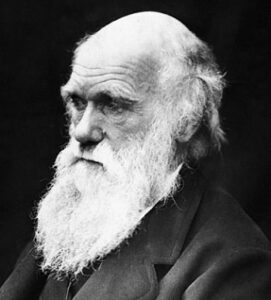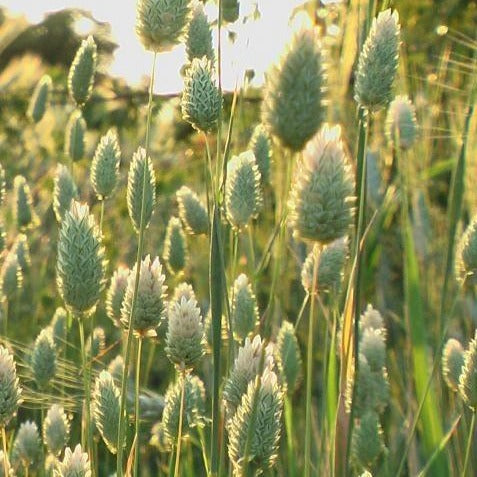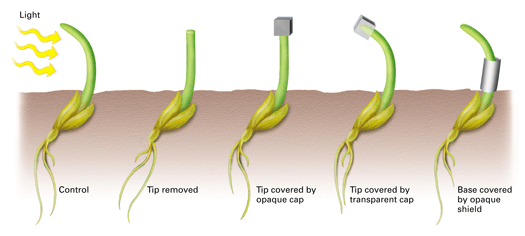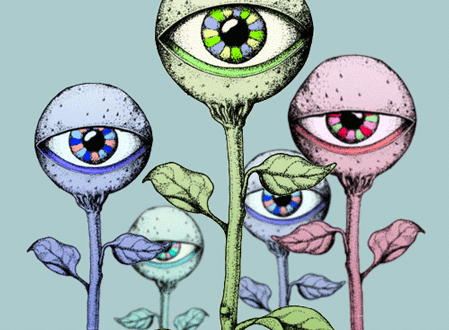We all know Darwin as the father of evolution. But we have almost no knowledge about Darwin the botanist. Our textbooks only taught us about how Darwin gave the evolution theory and what is evolution. Even the books included in our syllabus of schools and colleges for studying botany didn’t mention his contribution to this field. After the release of “The Origin of Species,” Darwin spent the next twenty years studying botany and published the book “The Power of Movement in Plants”. Charles Darwin and his son Francis Darwin both were fascinated by light’s effects on plant movement and growth. Which is basically known as phototropism. Together, they located the eyes of plants!! A lot of questions might be pondering on your mind like how can plants have eyes or how they even located that. Let me explain.


What is phototropism
Phototropism is the movement induced by the stimulation of light. It’s not unknown to us that plants bend towards the light. There can be both positive and negative phototropism. The shoot of plants bending towards the light source shows a positive phototropism. And the growth of roots in the opposite direction of the light source shows negative phototropism.
Why does phototropism occur
We have always been taught that plants move towards light because they need light for photosynthesis. But that’s not the case. Darwin and his son proved that phototropism does not take place because plants need to do photosynthesis to make food. But because plants have some inherent sensitivity to move towards the light. So, photosynthesis is not the cause, it is just the result of phototropism. The cause is plant’s sensitivity towards light.
/phototropism_flowering_shamrock-5a96b6821f4e1300369044f8.jpg)
The two Darwins grew a canary grass in a totally dark room for several days for their experiment. Then they lit a very small gas lamp 12 feet away from the canary grass. They kept the light of the lamp so dim that they themselves couldn’t see the grass in that dark. After only three hours the plant curved towards the dim light. The curving always occurred at the same part of the plant. An inch or two below the tip. But they wanted to know exactly which part of the plant saw the light. Or we can say, they wanted to find out where the eyes of plants are located.

The journey to find the eyes
Charles and Francis Darwin hypothesized that the “eyes” of the plant were found at the seedling tip and not at the bending part of the seedlings. They checked phototropism in five different seedlings.

- The first seedling was untreated and shows that the conditions of the experiment are conducive to phototropism.
- The second had its tip pruned off.
- The third had its tip covered with a lightproof cap.
- The fourth had its tip covered with a clear/transparent glass cap.
- The fifth had its middle section covered by a lightproof tube.
They experimented on these seedlings in the same conditions as their initial experiment, and of course, the untreated seedling bent toward the light. Similarly, the seedling with the lightproof tube around its middle bent toward the light. If they removed the tip of a seedling or covered it with a lightproof cap it went blind and couldn’t bend towards the light. But in scenario four the seedling with the cap still bent in the direction of the light. The difference was the cap was transparent. So, the light was able to transmit and induce the tip.
From this simple experiment, published in 1880, the two Darwins proved that phototropism is the result of light hitting the tip of a plant’s shoot.
Conclusion
That means the eyes of a plant are located at the tip of its shoot. The eyes see the light and transfer the information to the plant’s midsection to tell it to bend in that direction. By the end of this experiment, the Darwins had successfully demonstrated rudimentary sight in plants.
References
- What a plant knows by Daniel Chamovitz.
 Plantlet The Blogging Platform of Department of Botany, University of Dhaka
Plantlet The Blogging Platform of Department of Botany, University of Dhaka






learned something totally new.
It feels really great to hear that.
Your point of view caught my eye and was very interesting. Thanks. I have a question for you.